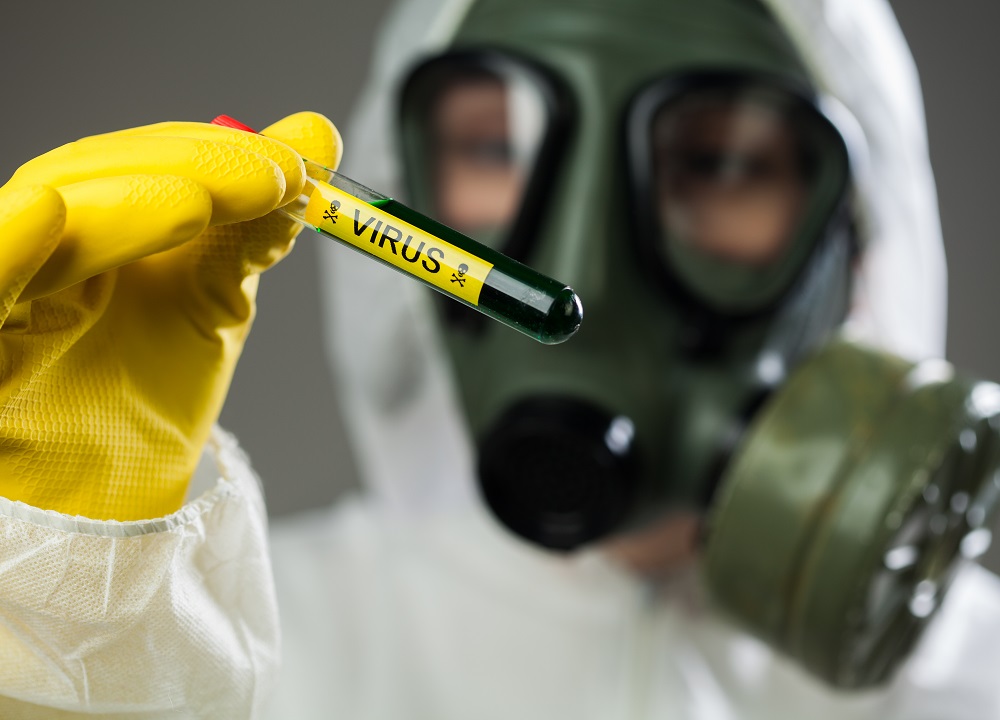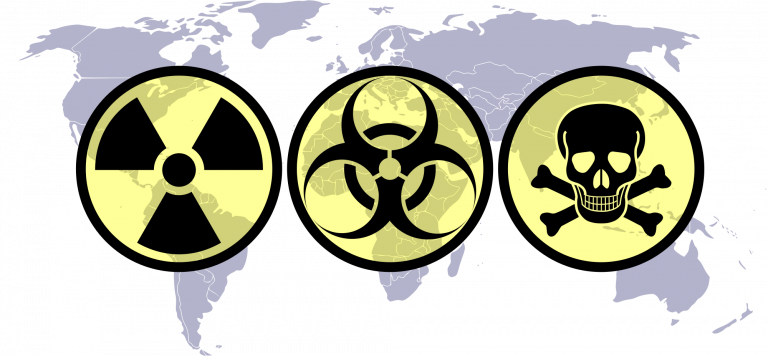Bioterrorism Study Guide
Introduction
Bioterrorism is a form of terrorism involving the use of infectious agents or other harmful biological or biochemical substances as weapons of terrorism leading to loss of life.
-
These agents can be bacteria, viruses, insects, fungi, or toxins that may occur naturally or are modified to be harmful to humans.
-
These biological agents are spread through the air, water, or food. Some viruses or bacteria can spread from person to person also.
-
Sometimes bioagents are very hard to detect and don’t cause any illness within a few hours or for a few days. The result can have irreversible consequences later.
-
The goal of bioterrorism is to kill people, livestock, or crops. Sometimes, it is to gain political, religious, or ideological goals.
-
Biodefense uses medical measures to protect people from bioterrorism, including medicines and vaccinations.
Biological Attack
A biological attack is a planned release of viruses, bacteria, or germs that can severely affect people’s lives, animals, or crops. Such an attack can lead to illness, death, fear, social and economic damage.
Biological Weapons
Biological weapons are any disease-causing bacteria, virus, or natural toxin combined with a delivery mechanism into an environment for hostile purpose and is used against an ‘enemy,’ with the intent to cause destruction.
Types of Agents and Diseases
1.Anthrax
- It is a very serious infection caused due to bacteria called Bacillus anthracis.
- Anthrax can be found mostly in soil and most commonly affects domestic and wild animals worldwide.
- People can get sick with anthrax if they come into contact with infected animals and their products.
- Anthrax can cause dangerous illnesses in humans, animals, and plants.
2. Botulism
Botulism is transmitted through food. It is caused by a toxin that attacks the nerve cells of the body.
3. Plague
A plague is an infectious disease that spreads quickly and kills a large number of people. The bubonic plague was in fact named the ‘Black Death’ and took the lives of millions in Europe during the middle ages.
4. Smallpox
It is a serious infectious disease that causes a high temperature resulting in fever and leaving marks on the skin. In earlier times, many people died because of smallpox. However, with the smallpox vaccine, the disease was eradicated.
5. Tularemia
- Tularemia is an infectious disease, also known as rabbit fever and deer fly fever.
- This virus typically attacks the lungs, skin, and eyes.
- The bacterium Francisella tularensis cause tularemia.
- This disease mainly affects hares, rabbits, and rodents, such as squirrels and muskrats.
6. Viral hemorrhagic fevers
- Viral hemorrhagic fever is an illness caused by four families of viruses.
- These include the Ebola and Marburg, yellow fever, and Lassa fever viruses.
- It has common features like it affects many organs, damages the blood vessels, and affects the body’s ability to regulate itself.
- Different types of viral hemorrhagic fevers are Filoviruses, Arenaviruses.
Biological Threats
-
Bioterrorism has high consequences. These biological events can result in mass casualties, epidemic illness, impurity in the environment, and even legal issues.
-
Biological incidents call for various disciplines, including the public health, emergency management, and law enforcement in planning any interventions.
Conclusion:
- Bioterrorism involves the terrorist use of biological weapons – involving infectious diseases, toxins produced by infectious diseases.
- It results in economic loss, mass casualties, illness, and loss of human and animals life.
- Bioweapons outbreaks result in severe erosion of genetic diversity in populations.
- The most effective prevention measure rests on creating and preserving strong cultural norms that prohibit the development and use of such weapons at the individual, social and political levels.
FAQs:
1. What are the three bioterrorism threat levels?
Anthrax (Bacillus anthracis), Botulism (Clostridium botulinum toxin), and plague (Yersinia pestis).
2. What are the symptoms of bioterrorism?
The symptoms of exposure to a biological agent might include sore throat, fever, double vision, rash on the skin, exhaustion, difficulty talking, confusion, weakness, nausea, body pain, vomit, diarrhea, and coughing, and cold.
3. What is the purpose of bioterrorism?
Bioterrorism is the planned release of viruses, bacteria, or another harmful virus to cause ill health or death in people, animals, or plants.
4. Is bioterrorism good or bad?
Attacks with biological weapons are a real threat, and responsible government agencies need to be aware of this.
5. When was bioterrorism first used?
One of the first bioterrorism uses of biological warfare occurred in 1347 when Mongol forces were reported to have catapulted plague-infested bodies over the walls into the Black Sea port of Caffa at Genoese trade center in the Crimean Peninsula.
6. Is ebola considered bioterrorism?
Yes, ebola is considered bioterrorism.
7. What are bioterrorism attacks?
A biological attack or bioterrorism is the planned release of viruses, bacteria, or germs that sicken or kill people, crops, or livestock.
8. What is the problem with bioterrorism?
Bioterrorism and other high consequence biological events can result in mass casualties, epidemic illness, healthcare worker illness, environmental contamination, legal issues, and cause unease within the medical community and the community.
We hope you enjoyed studying this lesson and learned something cool about Bioterrorism! Join our Discord community to get any questions you may have answered and to engage with other students just like you! Don’t forget to download our App to experience our fun, VR classrooms – we promise, it makes studying much more fun!
Sources:
Bioterrorism. https://flexbooks.ck12.org/cbook/ck-12-biology-flexbook-2.0/section/13.57/primary/lesson/bioterrorism-bio/ . Accessed on 1 Dec 2021.Bioterrorism https://emergency.cdc.gov/bioterrorism/ Accessed on 1 Dec 2021.Bioterrorism. https://www.ready.gov/Bioterrorism Accessed on 1 Dec 2021.
]]>

